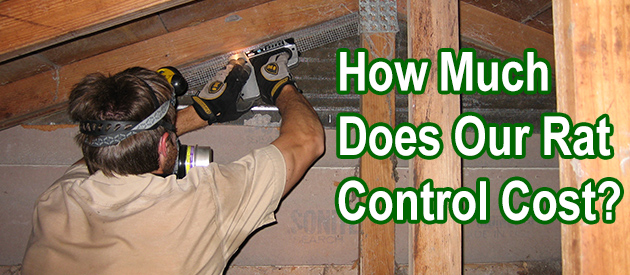Ramsey County, St. Paul Rat Control Situation:
Good Morning David, I just don't know what to do. I can't afford humdres of dollars to pay someone to rid my attic of RATS. My Mom paid a company over $400.00 a couple of years ago to rid her attic of RATS. The company lied to us. My Mom and I didn't realize until a few months later when a friend of my son went up in the attic and found that there was NOT severe rodant damage as the men had stated. They told my then 76 year old Mother and me that the attic was infested and all the Christmas decorations in the attic had been destroyed. Said there was so much rodent droppings and pee and that all boxes with the Christmas decorations were destroyed. We asked him to take the boxes down but they hever did. This is why this friend of the family came over and inspected the attic and took down all the boxes. NONE of the boces were even touched and looked like new. The decorations inside were untouched by the rats. These men lied to us. Now we find it difficult to trust anyone. Yes there were a few rat droppings but nothing to the point that these men had told us. He knew that my Mother and I would never venture up the attic. So how do I get a honesst company in Central FL, do you have anyone you can recommend? Thanks in advance, Cathy
St. Paul Rat Control Tip of The Week
The Reasons Why So Many Rats Live In Big Cities
Since ancient times, rodents have noticed how humans have created comfortable dwellings that in turn often house large amounts of food. The invasion of people's homes and privacy by rats is due to their constant search for shelter and food.
Rats can chase man wherever he goes, in order to continue to benefit. These animals can have a great capacity to adapt to the different environments humans live in. The rodent's diet consists of anything and to get it they can gnaw, climb, jump, run, and even swim.
A Big City To Share
With the settlement of large cities, human beings have grown in population and their consequences on the planet too. The environmental pollution of large cities represents a serious danger caused by people themselves. However, for rats, it has represented the peak of their population growth rate.
Human beings transporting themselves from one place to another, wherever they go, will take the rats along with them, having to share their cities. These animals have become pests to many people because it is exactly in the habitats of humans that they find the perfect conditions to live comfortably.
The More Garbage, The More Rats
Rodents can be phobic animals, that is, they fear new places and prefer to move through the same paths their whole lives. The exploratory and inquisitive instinct that characterizes rats is due to their need to survive in the absence of shelter. Rodents consume one-fifth of the world's food supply each year. The garbage dumps in big cities, day after day, are filled with new food remnants that provides rats with everything they need to survive.
Today, it's very likely that you'll come across a rat in any city in the world. However, people take care of their homes by being advised by professionals who teach them ways to combat this urban pest.


